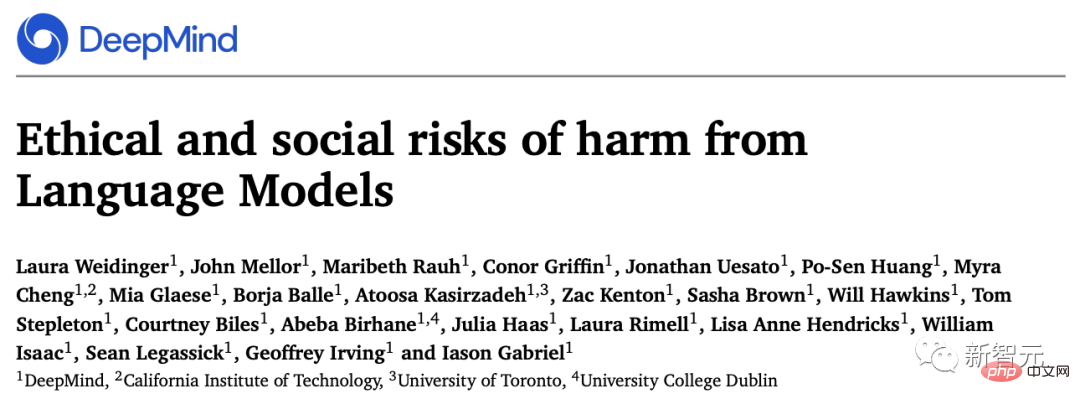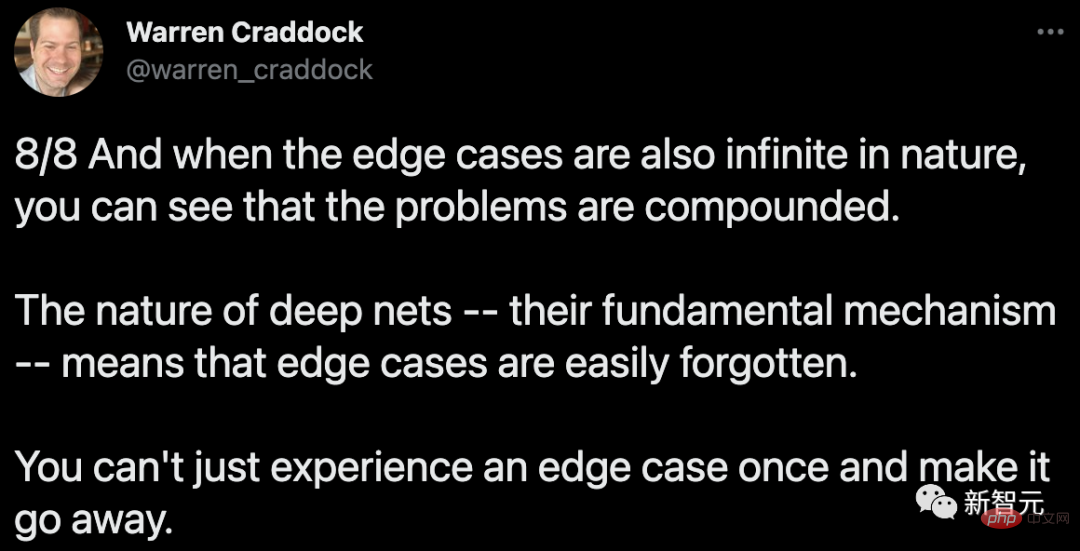 Technology peripherals
Technology peripherals
 AI
AI
 Marcus confronts Musk: You still want to make an all-purpose home robot, that's stupid!
Marcus confronts Musk: You still want to make an all-purpose home robot, that's stupid!
Marcus confronts Musk: You still want to make an all-purpose home robot, that's stupid!
Two days ago, Google launched a new research on robots-PaLM-SayCan.
To put it simply, "You are already a mature robot and can learn to serve me by yourself."

But Marcus doesn’t think so.
I understand, you want to be a "Terminator"
Judging from the performance, Google's new robot PaLM-SayCan is indeed very cool.
When humans say something, robots listen and act immediately without hesitation.
This robot is quite "sensible". You don't have to say "bring me pretzels from the kitchen", just say "I'm hungry", and it will He will walk to the table by himself and bring you snacks.
No need for extra nonsense, no need for more details. Marcus admits: It’s really the closest thing to Rosie the Robot I’ve ever seen.

It can be seen from this project that Alphabet’s two historically independent departments, Everyday Robots and Google Brain, have invested a lot of energy. Chelsea Finn and Sergey Levine who participated in the project are both academic experts.
Obviously, Google invested a lot of resources (such as a large number of pre-trained language models and humanoid robots and a lot of cloud computing) to create such an awesome robot.
Marcus said: I'm not surprised at all that they can build robots so well, I'm just a little worried - should we do this?
Marcus believes that there are two problems.
「Bull in the china shop」First of all, as we all know, the language technology on which this new system relies has its own problems; secondly, in the robot In context, the problem may be even greater.
Putting robots aside, we already know that so-called large language models are like bulls—powerful, powerful, and reckless enough to rampage through a china shop. They can aim directly at a target in one moment and then veer off into unknown danger. A particularly vivid example comes from the French company Nabla, which explores the utility of GPT-3 as a medical advisor:

There are countless questions like this Lift.
DeepMind, another subsidiary of Alphabet, raised 21 social and ethical issues for large language models, covering topics such as fairness, data leakage, and information.

##Paper address: https://arxiv.org/pdf/2112.04359.pdf
But they failed to mention this: robots embedded in certain models may kill your pets or destroy your house.We should really pay attention to this. The PaLM-SayCam experiment clearly shows that 21 questions need to be updated.
For example, large language models may suggest that people commit suicide, or sign a genocide pact, or they may be poisonous.
And they are very (over)sensitive to the details of the training set - when you put these training sets into the robot, if they misunderstand you, or do not fully understand what you are asking Meaning, they could get you into big trouble.
To their credit, the staff at PaLM-SayCan at least thought of preventing this from happening.
For every request that comes from the robot, they will conduct a feasibility check: the language model infers whether what the user wants to do can really be completed.
But is this foolproof? If the user asks the system to put the cat in the dishwasher, this is indeed possible, but is it safe? Is it ethical? Similar problems can occur if the system misunderstands humans. For example, if people say "put it in the dishwasher" and the large language model treats the referent of "it" as the word cat, the user refers to Something else. What we learn from all the research on large language models is that they are simply not reliable enough to give us a 100% clear understanding of the user’s intent. Misunderstandings are inevitable. Some of these misconceptions can lead to disaster if these systems are not subject to truly rigorous examination. Maayan Harel drew this great illustration for Rebooting AI, where the robot is told to put away everything in the living room: Do you still remember the story in the third part of the original book "Love, Death, Robot" where the owner is asked to throw the cat towards the crazy sweeping robot? The reality is that there is currently no feasible way to solve the many "alignment" problems that plague large language models. As Marcus mentioned before: large language models are superficial statistical simulations rather than models that convey rich knowledge of the world around them. Building a robot on a language system that knows little about the world is unlikely to succeed. And that’s exactly what Google’s new system is doing: stitching together a shallow, hopeless language understander with a powerful and potentially dangerous humanoid robot. As the saying goes, garbage in, garbage out. Keep in mind that there is often a huge gulf between presentation and reality. Self-driving car demonstrations have been around for decades, but getting them to work reliably has proven to be much harder than we thought. Google co-founder Sergey Brin promised in 2012 that we would have self-driving cars by 2017; now in 2022, they are still in limited experiments testing phase. Marcus warned in 2016 that the core problem is edge cases: In common situations, driverless cars are Great performance. If you put them out on a sunny day in Palo Alto, they're great. If you put them somewhere with snow or rain, or somewhere they haven't seen before, it will be difficult for them. Steven Levy has a great article about Google's autonomous car factory, and he talks about the big win at the end of 2015 being that they finally got these systems to recognize leaves. The system can recognize leaves, which is great, but there are less common things that don't have as much data. This remains the core issue. Only in recent years has the self-driving car industry woke up to this reality. As Waymo AI/ML engineer Warren Craddock recently said in a thread that should be read in its entirety: The truth is: there are countless edge cases. There are countless different Halloween costumes. The speed of running a red light is continuous. Unable to enumerate edge cases. Even if edge cases could be enumerated, it would not help! And, most importantly - When you understand that edge cases are also infinite in nature, you can see See how complex the problem is. The nature of deep networks—their underlying mechanics—means edge cases can easily be forgotten. You can't experience an edge case once and then have it go away. There’s no reason to think that bots, or bots with natural language interfaces like Google’s new system, are exempt from these problems. Another issue is interpretability. Google has put a lot of effort into making the system interpretable to some extent, but has not found an obvious way to combine large language models with the kind that (on microprocessors, USB driver and formal verification methods commonly used in large aircraft designs). Yes, using GPT-3 or PaLM to write surreal prose does not require verification; you can also trick Google engineers into believing that your software is sentient without ensuring that the system is coherent or correct. But humanoid home robots that handle a variety of household chores (not just Roomba vacuum cleaners) will need to do more than just socialize with their users, they will need to do so reliably and safely User request. Without a greater degree of explainability and verifiability, it’s hard to see how we can achieve this level of security. The "more data" that the driverless car industry has been betting on is not so likely to succeed. Marcus said this in that 2016 interview, and he still thinks so today—big data is not enough to solve the robot problem: If you want a robot in your home— —I still fantasize about Rosie the robot doing my chores—you can’t make mistakes. [Reinforcement learning] is very much trial and error on a large scale. If you have a robot at home, you can't have it crash into your furniture multiple times. You don't want it to put your cat through the dishwasher once. You don't get the same scale of data. For robots in real-world environments, what we need is for them to learn quickly from a small amount of data. Google and EveryDay Robots later found out about all this and even made a hilarious video admitting it. But this does not stop some media from getting carried away. Google’s new robot learns to listen to commands through “web crawling” This reminds me of There were two articles in Facebook announced the launch of Project M to challenge Siri and Cortana And this article—— Deep learning will soon allow us to have super-intelligent robots We all know the subsequent story: Facebook M was aborted. In the past 7 years, there has been no People can buy super-intelligent robots at any price. Of course, Google’s new robot did learn to accept some orders by “scraping the web”, but robotics technology It's in the details. In an ideal situation, when the robot has a limited number of options to choose from, the performance is probably around 75%. The more actions a robot has available to choose from, the worse its performance may be. Palm-SayCan The robot only needs to process 6 verbs; humans have thousands of verbs. If you read Google's report carefully, you will find that on some operations, the system's correct execution rate is 0%. For a general humanoid home robot, 75% is far from enough. Imagine a home robot was asked to lift grandpa to bed, but only succeeded three out of four times. Yes, Google did a cool demo. But it’s still far from a real-world product. PaLM-SayCan offers a vision of a future where, like Jetsons, we can talk to robots and let them help with everyday chores. This is a beautiful vision. But Marcus said: But if any of us - including Musk - are "holding our breath" and expect such a system to be implemented in the next few years, then he is a fool. . 

The gap with the real world


Interpretability Issue



Whoever believes it is a fool
The above is the detailed content of Marcus confronts Musk: You still want to make an all-purpose home robot, that's stupid!. For more information, please follow other related articles on the PHP Chinese website!

Hot AI Tools

Undresser.AI Undress
AI-powered app for creating realistic nude photos

AI Clothes Remover
Online AI tool for removing clothes from photos.

Undress AI Tool
Undress images for free

Clothoff.io
AI clothes remover

AI Hentai Generator
Generate AI Hentai for free.

Hot Article

Hot Tools

Notepad++7.3.1
Easy-to-use and free code editor

SublimeText3 Chinese version
Chinese version, very easy to use

Zend Studio 13.0.1
Powerful PHP integrated development environment

Dreamweaver CS6
Visual web development tools

SublimeText3 Mac version
God-level code editing software (SublimeText3)

Hot Topics
 1384
1384
 52
52
 How to comment deepseek
Feb 19, 2025 pm 05:42 PM
How to comment deepseek
Feb 19, 2025 pm 05:42 PM
DeepSeek is a powerful information retrieval tool. Its advantage is that it can deeply mine information, but its disadvantages are that it is slow, the result presentation method is simple, and the database coverage is limited. It needs to be weighed according to specific needs.
 How to search deepseek
Feb 19, 2025 pm 05:39 PM
How to search deepseek
Feb 19, 2025 pm 05:39 PM
DeepSeek is a proprietary search engine that only searches in a specific database or system, faster and more accurate. When using it, users are advised to read the document, try different search strategies, seek help and feedback on the user experience in order to make the most of their advantages.
 Sesame Open Door Exchange Web Page Registration Link Gate Trading App Registration Website Latest
Feb 28, 2025 am 11:06 AM
Sesame Open Door Exchange Web Page Registration Link Gate Trading App Registration Website Latest
Feb 28, 2025 am 11:06 AM
This article introduces the registration process of the Sesame Open Exchange (Gate.io) web version and the Gate trading app in detail. Whether it is web registration or app registration, you need to visit the official website or app store to download the genuine app, then fill in the user name, password, email, mobile phone number and other information, and complete email or mobile phone verification.
 Why can't the Bybit exchange link be directly downloaded and installed?
Feb 21, 2025 pm 10:57 PM
Why can't the Bybit exchange link be directly downloaded and installed?
Feb 21, 2025 pm 10:57 PM
Why can’t the Bybit exchange link be directly downloaded and installed? Bybit is a cryptocurrency exchange that provides trading services to users. The exchange's mobile apps cannot be downloaded directly through AppStore or GooglePlay for the following reasons: 1. App Store policy restricts Apple and Google from having strict requirements on the types of applications allowed in the app store. Cryptocurrency exchange applications often do not meet these requirements because they involve financial services and require specific regulations and security standards. 2. Laws and regulations Compliance In many countries, activities related to cryptocurrency transactions are regulated or restricted. To comply with these regulations, Bybit Application can only be used through official websites or other authorized channels
 Sesame Open Door Trading Platform Download Mobile Version Gateio Trading Platform Download Address
Feb 28, 2025 am 10:51 AM
Sesame Open Door Trading Platform Download Mobile Version Gateio Trading Platform Download Address
Feb 28, 2025 am 10:51 AM
It is crucial to choose a formal channel to download the app and ensure the safety of your account.
 Top 10 recommended for crypto digital asset trading APP (2025 global ranking)
Mar 18, 2025 pm 12:15 PM
Top 10 recommended for crypto digital asset trading APP (2025 global ranking)
Mar 18, 2025 pm 12:15 PM
This article recommends the top ten cryptocurrency trading platforms worth paying attention to, including Binance, OKX, Gate.io, BitFlyer, KuCoin, Bybit, Coinbase Pro, Kraken, BYDFi and XBIT decentralized exchanges. These platforms have their own advantages in terms of transaction currency quantity, transaction type, security, compliance, and special features. For example, Binance is known for its largest transaction volume and abundant functions in the world, while BitFlyer attracts Asian users with its Japanese Financial Hall license and high security. Choosing a suitable platform requires comprehensive consideration based on your own trading experience, risk tolerance and investment preferences. Hope this article helps you find the best suit for yourself
 Sesame Open Door Exchange Web Page Login Latest version gateio official website entrance
Mar 04, 2025 pm 11:48 PM
Sesame Open Door Exchange Web Page Login Latest version gateio official website entrance
Mar 04, 2025 pm 11:48 PM
A detailed introduction to the login operation of the Sesame Open Exchange web version, including login steps and password recovery process. It also provides solutions to common problems such as login failure, unable to open the page, and unable to receive verification codes to help you log in to the platform smoothly.
 Binance binance official website latest version login portal
Feb 21, 2025 pm 05:42 PM
Binance binance official website latest version login portal
Feb 21, 2025 pm 05:42 PM
To access the latest version of Binance website login portal, just follow these simple steps. Go to the official website and click the "Login" button in the upper right corner. Select your existing login method. If you are a new user, please "Register". Enter your registered mobile number or email and password and complete authentication (such as mobile verification code or Google Authenticator). After successful verification, you can access the latest version of Binance official website login portal.



